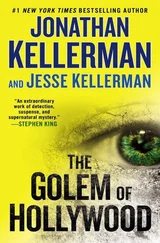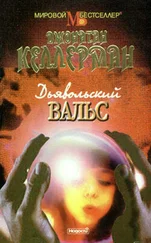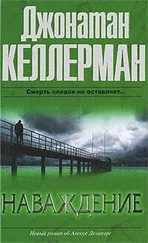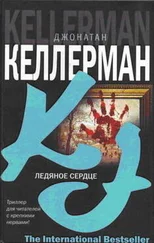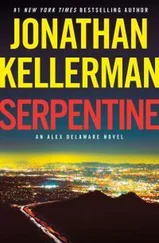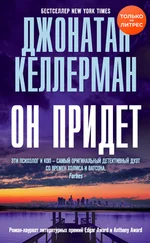“Wonderful. And what led you to La Casa?”
“Your reputation. I’ve heard you do good work. And you’re well organized.”
“Well, thank you, Doctor. We do try to do well by our kids!”
“I’m sure you do.”
“We give group tours for prospective Gentlemen. The next one is scheduled a week from this Friday.”
“Let me check my calendar.” I left the phone, looked out the window, did a half-dozen knee bends, and came back. “I’m sorry, Mr. Kruger. That’s a bad day for me. When’s the next one?”
“Three weeks later.”
“That’s such a long way off. I was hoping to get going sooner.” I tried to sound wistful and just a little impatient.
“Hmm. Well, Doctor, if you don’t mind something a bit more impromptu than the group orientation, I can give you a personalized tour. There’ll be no way to assemble the video show in time, but as a psychologist you know a lot of that stuff, anyway.”
“That sounds just fine.”
“In fact, if you’re free this afternoon, I could arrange it for then. Reverend Gus is here today – he likes to meet all potential Gentlemen – and that’s not always the case, what with his travel schedule. He’s taping Merv Griffin this week, then flying to New York for an ‘A.M. America.’ ”
He imparted the news of McCaffrey’s television activities with the solemnity of a crusader unveiling the Holy Grail.
“Today would be perfect.”
“Excellent. Around three?”
“Three it is.”
“Do you know where we are?”
“Not exactly. In Malibu?”
“In Malibu Canyon.” He gave me directions, then added, “While you’re there you can fill out our screening questionnaires. It would be a formality in a case such as yours, Doctor, but we do have to go through the motions. Though I don’t imagine psychological tests would be very valid for screening a psychologist, would they?”
“I don’t imagine so. We write ’em, we can subvert ’em.”
He laughed, straining to be collegial.
“Any other questions?”
“I don’t think so.”
“Terrific. I’ll see you at three.”
Malibu is as much an image as it is a place. The image is beamed into the living rooms of America on TV, splashed across the movie screen, etched into the grooves of LPs and emblazoned on the covers of trashy paperbacks. The image is one of endless stretches of sand; oiled, naked brown bodies; volleyball on the beach; sun-bleached hair; making love under a blanket with coital cadence timed to match the in – and out – of the tide; million-dollar shacks that teeter on pilings sunken into terra that isn’t a firma and, in fact, does the hula after a hard rain; Corvettes, seaweed and cocaine.
All of that is valid. But limited.
There’s another Malibu, a Malibu that encompasses the canyons and dirt roads that struggle through the Santa Monica mountain range. This Malibu has no ocean. What little water it does possess comes in the form of streams that trickle through shaded gullies and disappear when the temperature rises. There are some houses in this Malibu, situated near the main canyon road, but there remain miles of wilderness. There are still mountain lions roaming the more remote regions of this Malibu, and packs of coyotes that prowl at night, making off with a chicken, a possum, a fat toad. There are shady groves where the tree frogs breed so abundantly that you step into them thinking your foot is resting on soft, gray earth. Until it moves. There are lots of snakes – kings, garters and rattlers – in this Malibu. And secluded ranches where people live under the illusion that the latter half of the twentieth century never occurred. Bridle trails punctuated by steaming mounds of horse droppings. Goats. Tarantulas.
There are also lots of rumors surrounding the second, beachless Malibu. Of ritual murders carried out by Satanic cults. Of bodies that will never – can never be found. Of people lost while hiking and never heard from again. Horror stories, but perhaps just as valid as Beach Blanket Bingo.
I turned off Pacific Coast Highway, up Rambla Pacifica, and traversed the boundary from one Malibu to the other. The Seville climbed the steep grade with ease. I had Django Reinhardt on the tape deck and the music of the Gypsy was in synch with the emptiness that unfolded before my windshield – the serpentine ribbon of highway, assaulted by the relentless Pacific sun one moment and shaded by giant eucalyptus the next. A dehydrated ravine to one side, a sheer drop into space on the other. A road that urged the weary traveler to keep going, that offered promises it could never keep.
I had slept fitfully the night before, thinking of Robin and myself, seeing the faces of children – Melody Quinn, the countless patients I had treated over the last ten years, the remains of a boy named Nemeth, who had died just a few miles up this same road. What had been his last vision, I wondered, what impulse had crossed a crucial synapse at the last possible moment before a giant machine-monster roared down on him from nowhere… And what had led him to walk this lonesome stretch of road in the dead of night?
Now, fatigue, nursed by the monotony of the journey, was tracing a slow but inexorable passage along my spine, so that I had to fight to remain alert. I turned the music louder and opened all the windows in the car. The air smelled clean, but tinged with the odor of something burning – a distant bridge?
So occupied was I in the struggle for clarity of consciousness that I almost missed the sign the county had erected announcing the exit for La Casa de los Niños in two miles.
The turnoff itself was easy to miss, only a few hundred yards past a hairpin bend in the road. The road was narrow, barely wide enough for two vehicles to pass in opposite directions, and heavily shadowed by trees. It rose a half-mile at an unrelenting incline, steep enough to discourage any but the most purposeful foot traveler. Clearly the site had never been meant to attract the walk-in trade. Perfect for a labor camp, work farm, detention center, or any nexus of activity not meant for the prying eyes of strangers.
The access road ended at a twelve-foot-high barrier of chain link. Four-foot-high letters spelled out La Casa de los Niños in polished aluminum. A hand-painted sign of two huge hands holding four children – white, black, brown and yellow – rose to the right. A guardhouse was ten feet on the other side of the fence. The uniformed man inside took note of me, then spoke to me through a squawk box attached to the gate.
“Can I help you?” The voice came out steely and mechanical, like human utterance pureed into bytes, fed into a computer and regurgitated.
“Dr. Delaware. Here for a three o’clock appointment with Mr. Kruger.”
The gate slid open.
The Seville was allowed a brief roll until it was stopped by an orange and white striped mechanical arm.
“Good afternoon, Doctor.”
The guard was young, mustachioed, solemn. His uniform was dark gray, matching his stare. The sudden smile didn’t fool me. He was looking me over.
“You’ll be meeting Tim at the administration building. That’s straight up this way and take the road to the left. You can park in the visitors’ lot.”
“Thank you.”
“You’re quite welcome, Doctor.”
He pushed a button and the striped arm rose in salute.
The administration building looked like it had once served a similar purpose during the days of Japanese internment. It had the low-slung, angry look of military architecture, but there was no doubt that the paint job – a mural of a baby blue sky filled with cotton candy clouds – was a contemporary creation.
The front office was paneled in cheap imitation oak and occupied by a grandmotherly type in a colorless cotton smock.
Читать дальше



